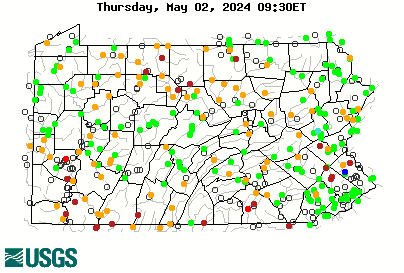IsaacYampolsky
New member
I'm new to fly fishing and I've been trying to familiarize myself with the different types of flies and indicators. I got started fishing a squirmy worm with a stick-on indicator. It was easy enough to learn with due to the low weight and air resistance of the indicator and the ease of applying the stick-on indicator. However, they do tend to fall off after repeated use and they are not great for the envitonment, so I decided it was about time for me to switch a wool indicator.
I bought a DIY kit from amazon which came with four colors, a tool, and a plastic tube. It was easy enough to use, but when used with the tube, it tended to fall off, so I looked up how to apply the wool directly to your line. It was easy enough to learn, and I've been tying the wool on my line in a way that stays on and is easy to adjust, but it keeps getting tangled up in my line and causing insane knots. These knots and tangles take forever to fix and are usually so bad that I have to break off my tippet entirely and tie on a whole new rig.
Other than that, I really love fishing with these indicators because they detect subtle strikes which is good for me because I've been primarily fishing for panfish since that's the majority of what I have around me in this season especially at my local shallow creek. They look natural, their depth can be adjusted easily, and they're biodegradable, which is awesome.
If anyone is familiar with this problem or knows the optimal way to attach wool indicators, please let me know, because other than this issue, I love these indicators, and would love to continue using them. However, as it stands, they are routinely ruining my trips and causing me a lot frustration.
Any advice is welcome.
I bought a DIY kit from amazon which came with four colors, a tool, and a plastic tube. It was easy enough to use, but when used with the tube, it tended to fall off, so I looked up how to apply the wool directly to your line. It was easy enough to learn, and I've been tying the wool on my line in a way that stays on and is easy to adjust, but it keeps getting tangled up in my line and causing insane knots. These knots and tangles take forever to fix and are usually so bad that I have to break off my tippet entirely and tie on a whole new rig.
Other than that, I really love fishing with these indicators because they detect subtle strikes which is good for me because I've been primarily fishing for panfish since that's the majority of what I have around me in this season especially at my local shallow creek. They look natural, their depth can be adjusted easily, and they're biodegradable, which is awesome.
If anyone is familiar with this problem or knows the optimal way to attach wool indicators, please let me know, because other than this issue, I love these indicators, and would love to continue using them. However, as it stands, they are routinely ruining my trips and causing me a lot frustration.
Any advice is welcome.




